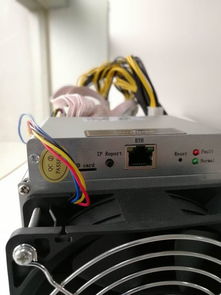A Comprehensive Analysis of US Bitcoin Mining Equipment: Reviews, Insights, and Recommendations
In the ever-evolving landscape of cryptocurrencies, Bitcoin remains the undisputed pioneer, captivating investors and miners alike with its groundbreaking technology and soaring value. As the United States emerges as a powerhouse in Bitcoin mining, the demand for cutting-edge mining equipment has skyrocketed. This comprehensive analysis delves into the intricacies of US-based Bitcoin mining hardware, offering in-depth reviews, insightful observations, and practical recommendations. From the buzzing server rooms of dedicated mining farms to the hands-on experience of individual miners, we’ll explore how these machines not only drive the Bitcoin network but also pave the way for ventures into Ethereum and Dogecoin mining.
At the heart of Bitcoin mining lies the relentless quest for computational power, where advanced mining rigs transform raw electricity into digital gold. Leading manufacturers in the US, such as Bitmain and Canaan, have rolled out a series of high-performance miners that promise efficiency and profitability. Take, for instance, the Antminer S19 series, which boasts hashing rates exceeding 110 TH/s while maintaining a relatively modest power consumption of around 3,250 watts. These beasts of burden are not just tools; they are engineering marvels that blend innovation with reliability, allowing users to tackle the complex puzzles of the Bitcoin blockchain. However, as we shift gears to other cryptocurrencies like Ethereum, which relies on a proof-of-stake model post its 2022 merge, miners must adapt their strategies, potentially repurposing rigs for alternative uses or exploring Dogecoin’s more accessible proof-of-work system.

Beyond individual setups, the rise of mining farms across the US has revolutionized the industry, offering scalable solutions for those wary of managing hardware themselves. These vast operations, often housed in climate-controlled warehouses in states like Texas and Washington, provide the infrastructure needed for optimal performance. Here, hosting services become invaluable, where companies specialize in maintaining fleets of miners on behalf of clients, handling everything from cooling systems to network connectivity. This model not only reduces operational headaches but also opens doors to diversified portfolios, including mining rigs optimized for Ethereum’s former proof-of-work demands or the whimsical yet profitable world of Dogecoin. Imagine rows upon rows of synchronized machines, their fans whirring in harmony, churning out blocks for multiple cryptocurrencies simultaneously—a symphony of digital extraction that underscores the burst of innovation in this sector.
Delving deeper, let’s dissect the key components that make a mining rig tick. A typical setup includes a robust ASIC miner, efficient power supplies, and sophisticated cooling mechanisms to prevent overheating during prolonged operations. For Bitcoin enthusiasts, the choice of miner can mean the difference between profitability and loss, especially with fluctuating energy costs and network difficulty. Reviews from users highlight the MicroBT Whatsminer M30S++ as a formidable contender, praised for its durability and ease of integration into existing farms. Yet, as Ethereum transitions away from mining, savvy operators are pivoting to assets like Dogecoin, which still employs similar hardware, ensuring that investments remain versatile. This adaptability is crucial in a market where volatility reigns supreme, turning what could be a static investment into a dynamic, multifaceted opportunity.
In terms of broader insights, the US regulatory environment plays a pivotal role in shaping the mining landscape. With policies varying from state to state, miners must navigate a maze of electricity rates, environmental regulations, and tax incentives. For instance, regions with cheap renewable energy, such as hydroelectric-powered areas in the Pacific Northwest, offer a greener alternative to traditional fossil fuel-dependent operations. This not only aligns with global sustainability goals but also enhances the appeal of hosting services that emphasize eco-friendly practices. As Bitcoin and its counterparts like Ethereum and Dogecoin continue to gain mainstream acceptance, exchanges such as Coinbase and Binance facilitate seamless transactions, further integrating mining into the financial ecosystem. The interplay between these elements creates a rich tapestry of opportunities, where bursts of market surges can lead to exponential returns for well-prepared miners.
Finally, when it comes to recommendations, the key is balance—between cost, efficiency, and future-proofing. For newcomers, starting with a mid-range miner like the AvalonMiner 1246 could provide a gentle entry into Bitcoin mining, while seasoned operators might opt for high-end models that support multi-currency mining. Don’t overlook the value of professional hosting; partnering with reputable providers can amplify returns by optimizing uptime and reducing risks. As we gaze toward the horizon, the fusion of Bitcoin’s legacy with the innovative spirits of Ethereum and Dogecoin promises an exciting frontier, one where US mining equipment stands at the forefront of technological advancement.

1 Comment-
A deep dive into US Bitcoin mining rigs. Unearths hidden gems, exposes costly duds. Practical recommendations for maximizing hash rate and ROI. A must-read for serious miners.